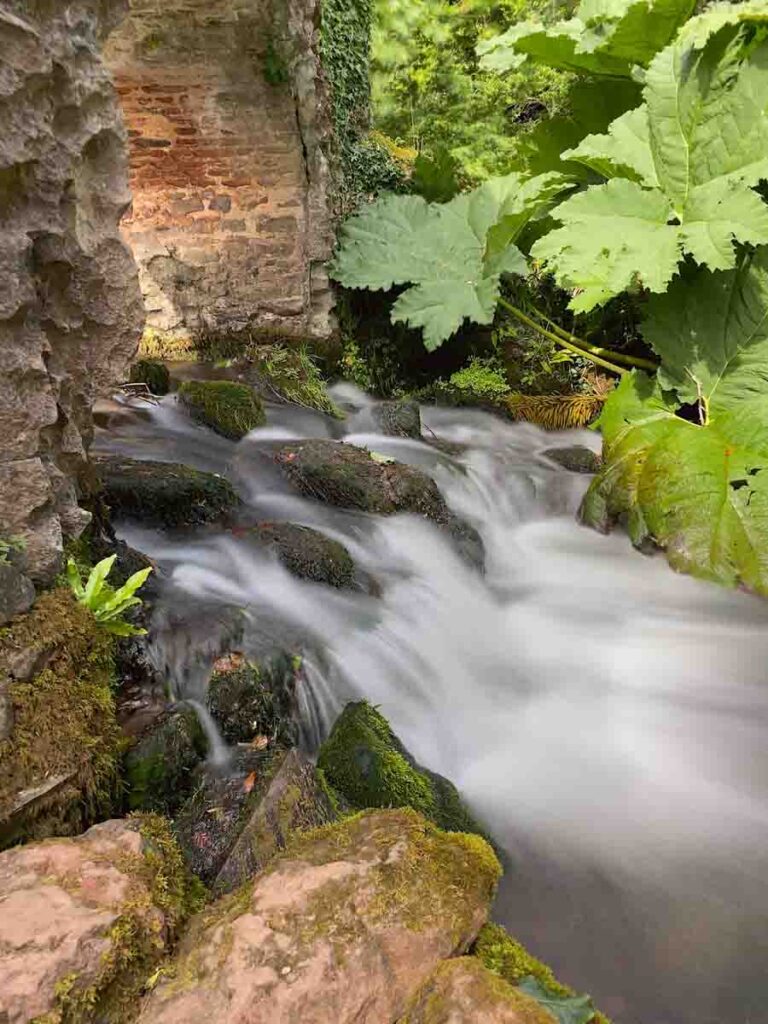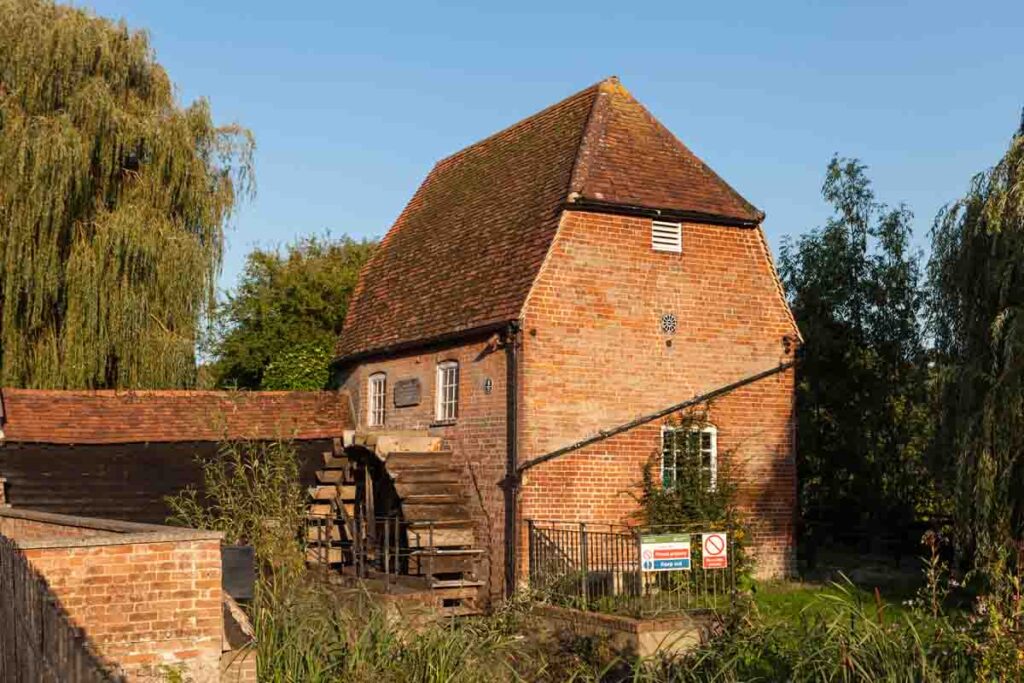


Have you ever wondered what the future holds for Britain’s watermills? Take a trip down memory lane and explore the history of these majestic landmarks. The country’s watermills have been with us since the Middle Ages, when they were first used for grinding grain or turning mechanical power. Today, they are part of our cultural heritage, but they face an uncertain future in a world that values progress over tradition.
However, there is hope! Watermill conservation programs across Britain are working to preserve these stunning monuments for future generations. Let’s take a closer look at how these conservation efforts are achieving success and how we can help in this new era of British watermill preservation.
Have you ever seen a British watermill? These working structures bring together the country’s history, not to mention the engineering feats that made them possible. From ancient farms to majestic castles, these iconic landmarks have been a part of Britain’s landscape for centuries, but now, they are facing a new era of conservation and preservation.
Today, watermills are an essential aspect of England’s heritage and a unique cultural trait that should be preserved for preservation. Despite technological advances, watermills are still operating due to their capabilities; for instance, some can produce up to 50 tons of goods yearly in just one mill.
As with any historical structure, watermills need our help to survive: they’re susceptible to environmental changes, weather destruction and lack of maintenance funds. That’s why many organizations are now taking steps towards preserving these iconic landmarks, to provide current and future generations with the opportunity to experience their beauty.
The iconic watermills of Britain have long been associated with a rich history and culture. From the castles and manor houses of medieval Britain to the picturesque cottages of the Cotswolds, these sites have been an integral part of our built cultural heritage.
Watermills are more than just old bits of machinery. They represent a significant part of our engineering heritage. Their technology has been used to power numerous industries over centuries and is an important reminder of our industrial past.
Moreover, many watermills form an integral part of the landscape and environment, shaping historical gardens, parks, and waterfront developments – which play an essential role in regulating flood defences. They are also home to many species of plants and animals – providing habitats for all kinds of wildlife.

Preserving these watermills is about much more than safeguarding architecture; it’s about preserving history. It’s up to us to ensure that these sites remain standing for generations to come so that their stories may continue to be told, even after they are gone.
What efforts are being taken to conserve historic watermills? You may be surprised to learn that a few conservation programs exist in Britain to protect and preserve the country’s landmark watermills.
One of the most prominent of these efforts is Watermills Through the Ages, established in 1992 to conserve and restore watermills across England, Scotland and Wales. The program also strives to preserve the valuable knowledge of these ancient structures, from mill workers and skills to specific design elements.
To achieve this, Watermills Through the Ages offers grants for repairs and restoration projects carried out on mills and funding for internships and education programs that teach traditional milling techniques. The organization also encourages research into mill technology and organizes workshops and conferences on heritage conservation and sustainable energy production.
The goal of Watermills Through the Ages is twofold: not only does it seek to protect these critical pieces of history, but it also encourages people to use them for various modern purposes, such as producing energy or grinding flour, so that they remain relevant in today’s society. To that end, many mills now have renewable energy sources associated with them, such as solar panels or wind turbines, yet another way that we can help preserve these majestic structures while at the same time reducing our impact on the environment!

A significant part of Britain’s historical past is associated with its iconic watermills, and there is an ongoing effort to protect and preserve these treasured sites.
Although watermills were once used to power industries throughout the country, they are now respected as integral parts of our heritage. By preserving these structures, we can ensure that future generations can appreciate them and learn about our history.
Watermills are a great way to teach the community about the importance of conservation. Not only can they be used as an educational resource to explore how power was generated in the past, but they can also help to demonstrate how energy production is evolving today.
Another reason watermill preservation is so important is that it helps protect traditional values and culture within specific areas in Britain. For example, some local communities may have a deep connection with a particular watermill, and it may provide a backdrop for local artwork or artisanship.
Finally, preserving British watermills has become a significant aspect of boosting the economy of rural areas. With more people becoming interested in visiting watermills as tourist attractions, there has been an increase in tourism revenue, which has helped save some of these structures from total decay or destruction.
This revenue has also been reinvested into further conservation projects, reinforcing the importance of safeguarding this part of our history for future generations.
Did you know historic watermills are used for more than grinding grain? A few innovative new uses for these centuries-old structures include using them as homes, shops, restaurants, and even as venues for events.
The National Lottery Heritage Fund has allowed many old structures to be brought up to code and restore life to forgotten locations. It’s a win-win: beautifully preserved buildings get new life while providing a new source of income and jobs in local communities.
The most popular use of watermills is as a residential properties. Many have been converted into homes with interior decor that pays homage to the mill’s one-time use, like exposed wood beams and big windows that let in plenty of natural light. Inside and out, these mills make unique, beautiful homes.
Rural locations are perfect for businesses that take advantage of the peace; you can find everything from yoga studios to breweries housed in converted watermills. Local communities benefit from this kind of job growth, not to mention the influx of visitors who come for the unique setting apart from their daily lives.
Held in restored buildings or on restored grounds, such as a mill pond, historic watermills also provide a magical setting for events such as weddings, conferences, seminars and more. The tables are set with original machinery still present, so guests get an authentic experience with modern conveniences.
You may be surprised to know that a lot of work is being done to preserve and conserve the historic watermills of Britain. Many conservation projects are underway, including restoring and maintaining mills in danger of disrepair.
Historic Englands Mills in Time project aims to conserve and restore around 50 historic watermills identified as being at risk. This project involves an extensive survey of the mills, followed by structural repairs and conservation work with the help of volunteer groups, grants and fundraising campaigns.
The National Trust also runs a program of structural surveys conducted by volunteer engineers and surveyors. The surveys provide valuable data on the condition of the mills, which can then be used to develop appropriate restoration strategies. The National Trust has also recently launched an online database which contains information on more than 1,000 watermills across Britain.
With continued effort and support from volunteers and organizations, the hope is that these beautiful historic sites will be saved for future generations to enjoy!
British watermills are a part of our living history, and their preservation is essential for our future. We can all make a difference; even small changes can have a significant impact, whether through education and raising awareness or restoring and conserving these sites. By working together, we can help protect and preserve our watermill heritage.
These sites have often been overlooked, but with concerted efforts and public engagement, creating a bright future for these historic watermills is possible. It’s time to step up and play our part in preserving the past to help create a better future.
Since 1893 Tuscan Foundry has been involved in making and supplying cast iron guttering, pipe and drainage products to repair and conserve historic watermills throughout the UK.
In particular, we are able to create patterns, cast and supply bespoke gutter profiles that might